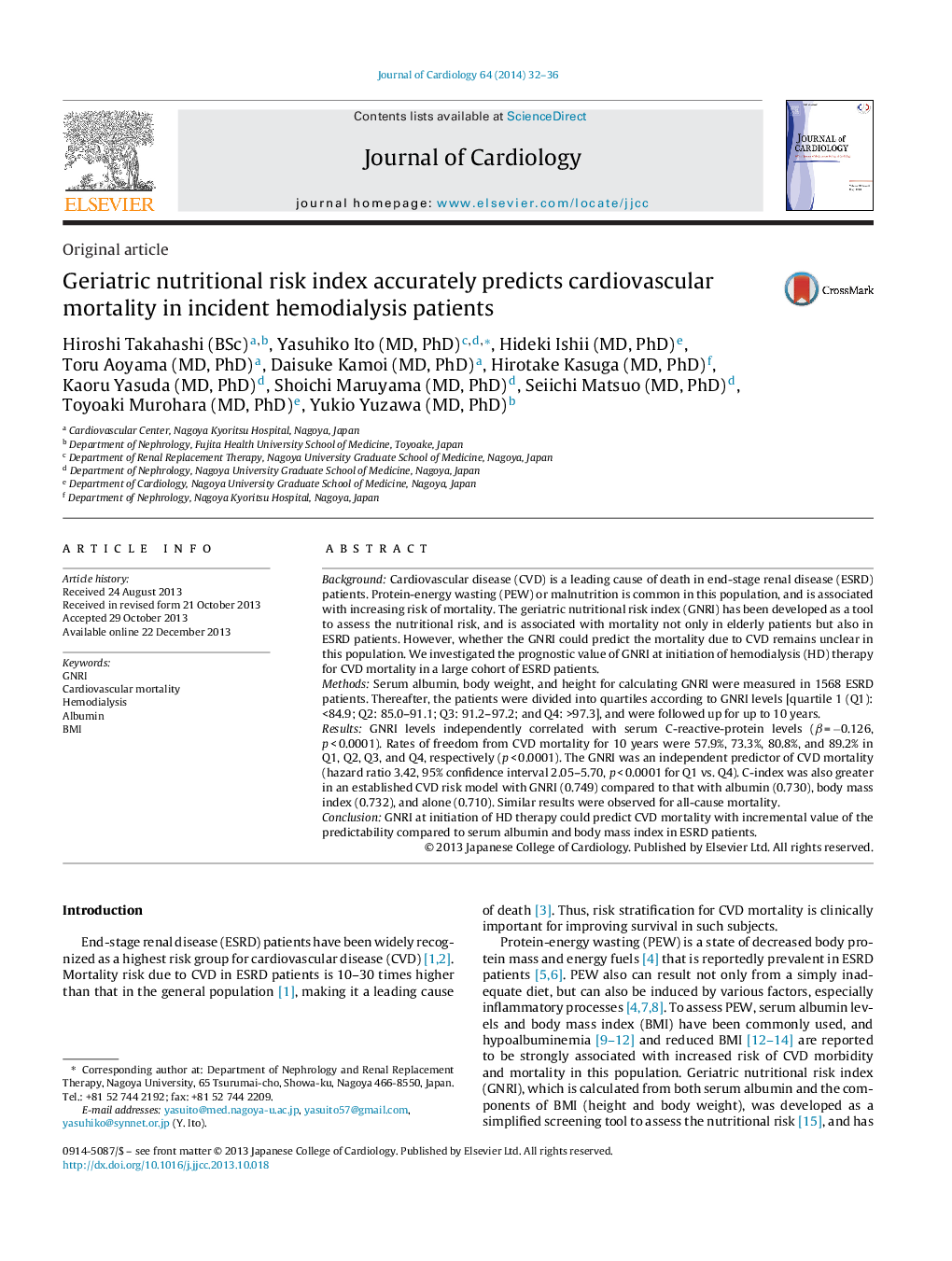| Article ID | Journal | Published Year | Pages | File Type |
|---|---|---|---|---|
| 2963202 | Journal of Cardiology | 2014 | 5 Pages |
BackgroundCardiovascular disease (CVD) is a leading cause of death in end-stage renal disease (ESRD) patients. Protein-energy wasting (PEW) or malnutrition is common in this population, and is associated with increasing risk of mortality. The geriatric nutritional risk index (GNRI) has been developed as a tool to assess the nutritional risk, and is associated with mortality not only in elderly patients but also in ESRD patients. However, whether the GNRI could predict the mortality due to CVD remains unclear in this population. We investigated the prognostic value of GNRI at initiation of hemodialysis (HD) therapy for CVD mortality in a large cohort of ESRD patients.MethodsSerum albumin, body weight, and height for calculating GNRI were measured in 1568 ESRD patients. Thereafter, the patients were divided into quartiles according to GNRI levels [quartile 1 (Q1): <84.9; Q2: 85.0–91.1; Q3: 91.2–97.2; and Q4: >97.3], and were followed up for up to 10 years.ResultsGNRI levels independently correlated with serum C-reactive-protein levels (β = −0.126, p < 0.0001). Rates of freedom from CVD mortality for 10 years were 57.9%, 73.3%, 80.8%, and 89.2% in Q1, Q2, Q3, and Q4, respectively (p < 0.0001). The GNRI was an independent predictor of CVD mortality (hazard ratio 3.42, 95% confidence interval 2.05–5.70, p < 0.0001 for Q1 vs. Q4). C-index was also greater in an established CVD risk model with GNRI (0.749) compared to that with albumin (0.730), body mass index (0.732), and alone (0.710). Similar results were observed for all-cause mortality.ConclusionGNRI at initiation of HD therapy could predict CVD mortality with incremental value of the predictability compared to serum albumin and body mass index in ESRD patients.
